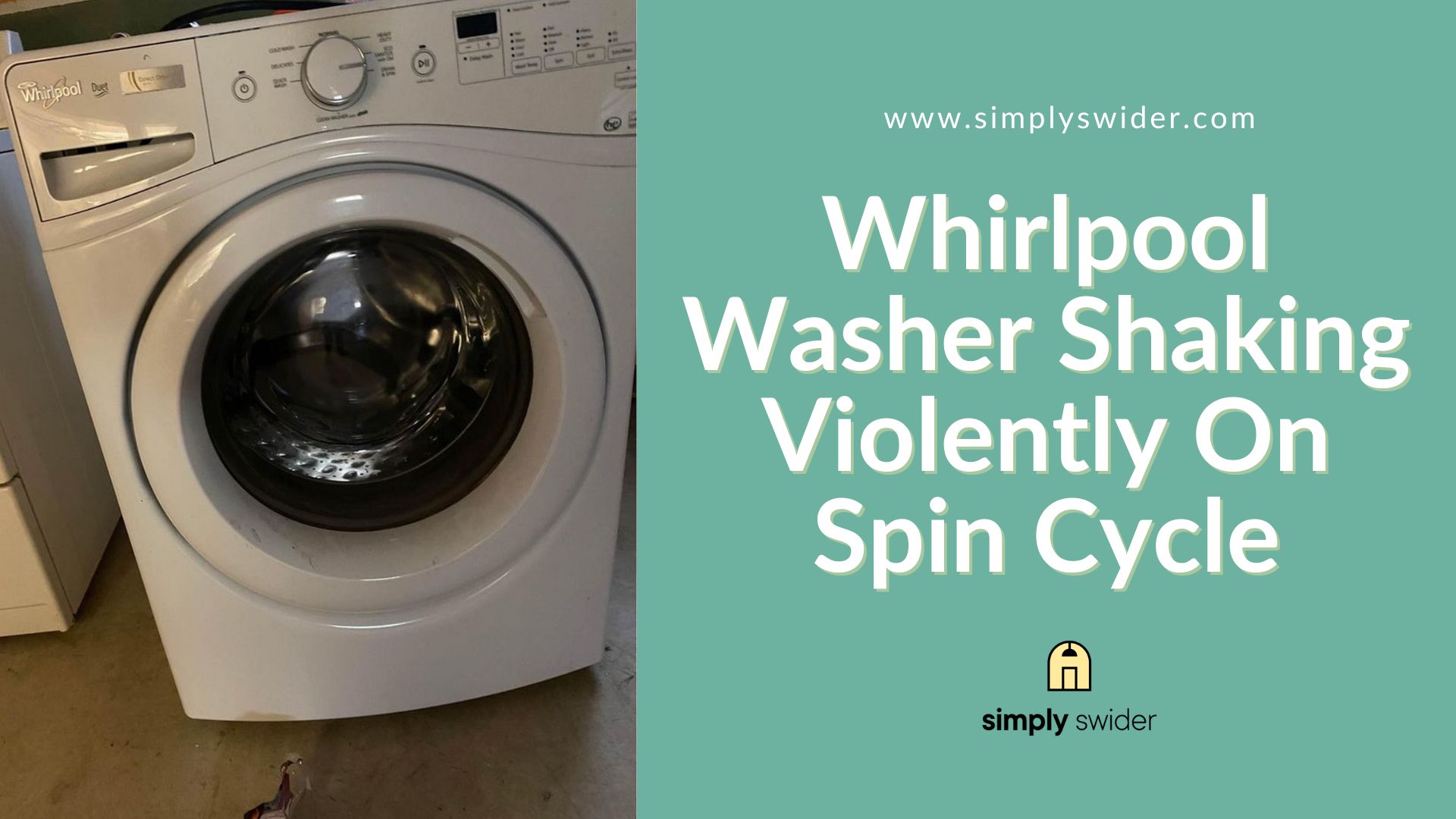Has your Whirlpool washer ever taken you by surprise, breaking into an unanticipated jig during its spin cycle?
Trust me, you’re not alone.
While a gentle, rhythmic hum is part and parcel of the process, an enthusiastic shake or an alarming rattle is certainly not.
So:
When the rhythm goes haywire, it’s time to step in.
To bring you top-notch advice, I didn’t hesitate to call in the big guns – I’ve consulted with Alex, my trusted colleague, who is not only an experienced technician but also the owner of AB Appliance Repair company in Los Angeles.
Now, without further ado, let’s dive into this guide.
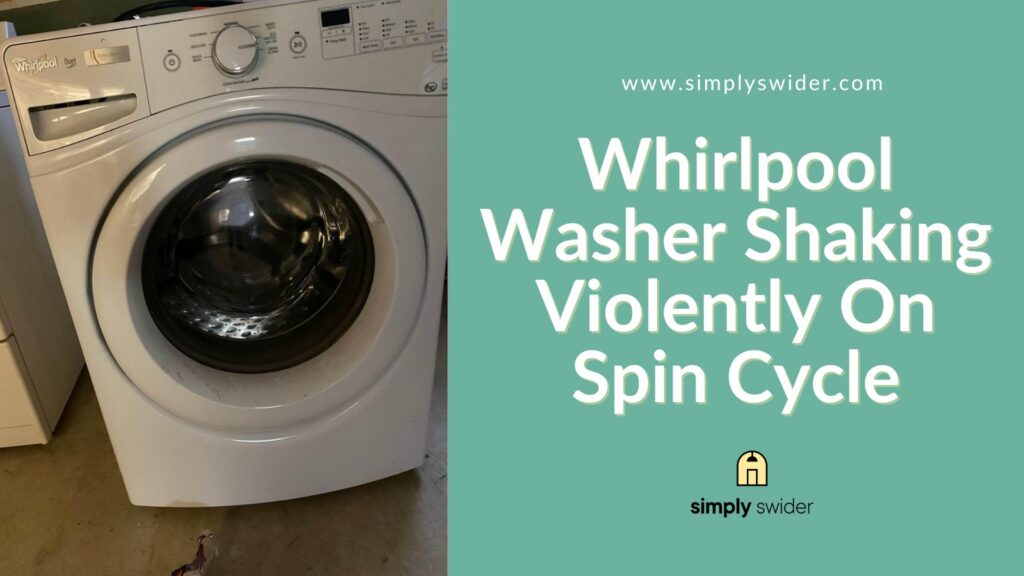
Table of Contents
Why is Your Whirlpool Washer Shakes Violently During the Spin Cycle?
The secret could be as simple as replacing a faulty shock absorber or suspension kit, or perhaps a worn-out snubber ring. Ensuring your washer is perfectly balanced and removing any lingering shipping bolts can also work wonders.
Read on as I delve into each possible cause, the fixes, and sharing insights from my experiences and those of Alex.
1. Ensure Your Whirlpool Washer is Balanced
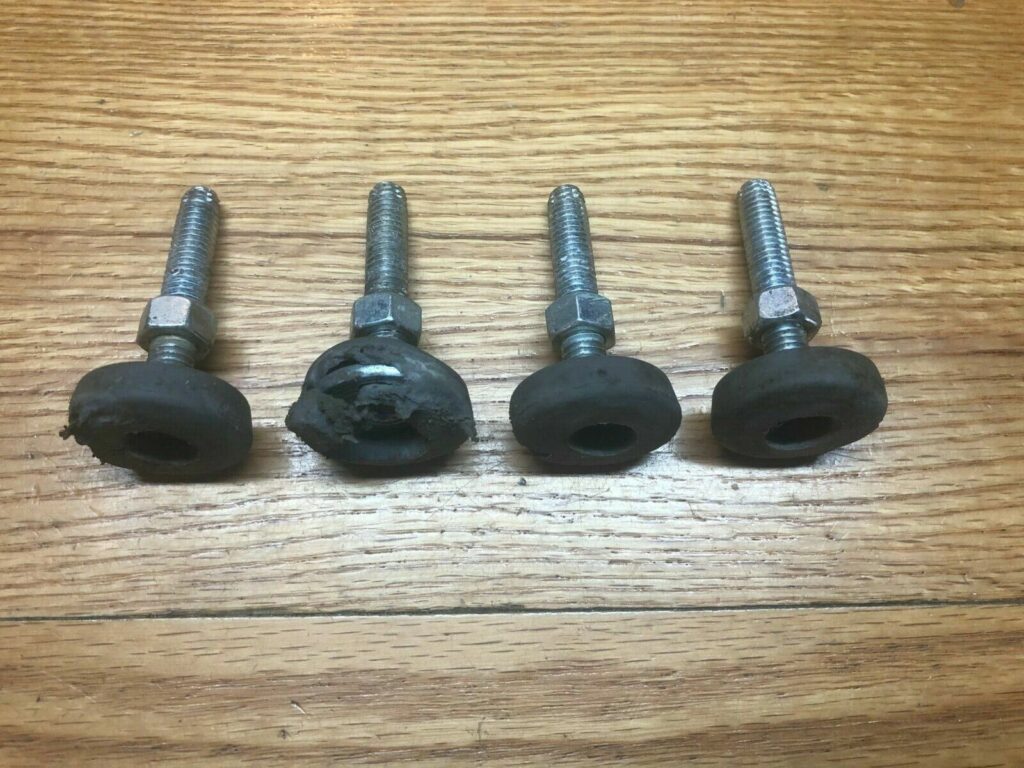
Let’s address a common misconception:
A wildly shaking washer doesn’t always mean a complex internal issue. In fact, it might simply be a question of balance. As Alex, often reminds us, “Sometimes, the simplest solution is the right one.”
Recently, I received a question from a user who shared a similar situation. They discovered that their Whirlpool washer was simply unbalanced, both in terms of its physical stance and the load inside.
Here’s the thing:
Each Whirlpool washer is built with adjustable leveling legs. These help the machine balance on any surface. So, if your washer’s creating a ruckus, it’s time for a balance check.
Now, how do you do this?
- Step 1: Give your washer a little shake. If it rocks, the surface might be uneven.
- Step 2: For a precise diagnosis, place a spirit level on your washer. If the bubble isn’t centered, your washer’s unbalanced.
If your washer is off-balance:
- Step 1: Adjust the leveling legs by turning the bolts on each leg until the washer is level.
But:
Alex brings up an important point, “Or it could even be the back self-leveling legs. Sometimes one will get jammed and not retract correctly.” So, ensure you check those as well.
But don’t forget:
The load inside the washer can also throw off the balance. As Alex puts it, “Overloading or uneven distribution of clothes can lead to an off-balance spin, causing the washer to shake.”
So, what’s the quick fix?
- Step 1: Redistribute the clothes if they’re unevenly gathered or heavier on one side.
- Step 2: Consider removing some items to balance the weight.
Once you’ve done this, you should notice a significant reduction in noise and vibration from your washer. As our community member put it, “It was like night and day.”
2. Replace the Faulty Shock Absorber
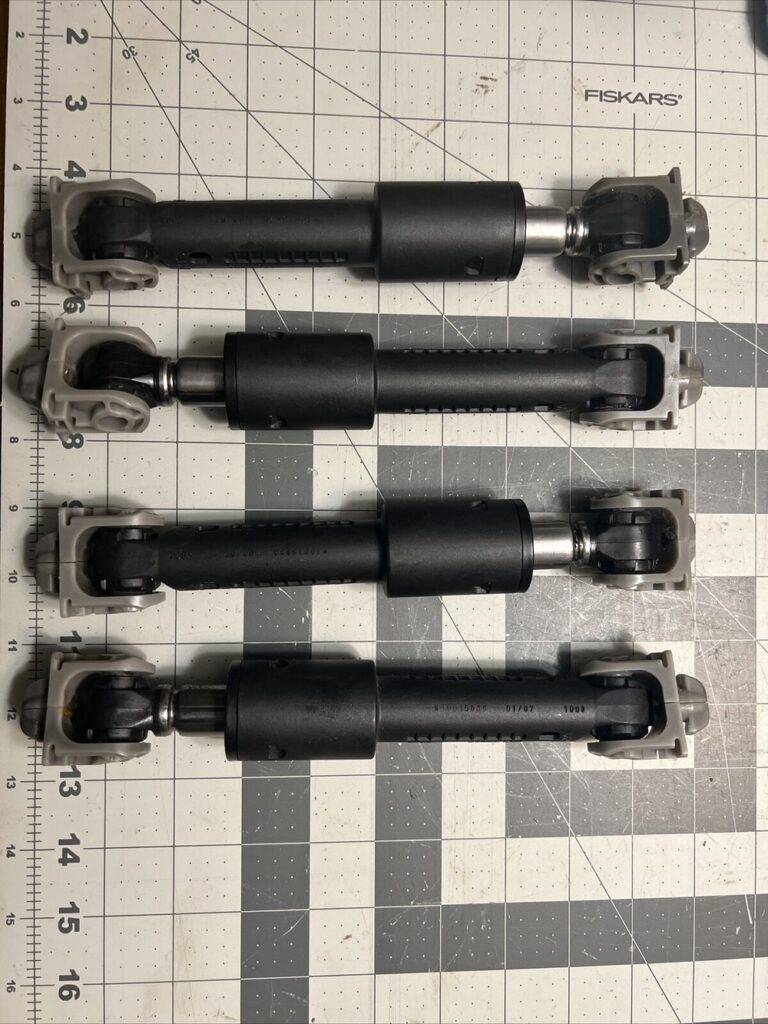
Let’s consider another angle. If the balance is not the issue, the culprit behind your Whirlpool washer’s out-of-control spin might be the shock absorbers.
As Alex advises, “If the washer behaves well when empty but starts dancing with heavier loads or during certain cycles, I’d suspect a broken shock absorber.”
These silent heroes, linked to the washer tub and frame, absorb the brunt of the spin cycle’s force. Once they fail, the repercussions are loud and clear. And as Alex points out, “When one goes bad, it’s often a chain reaction.”
So, what to do?
If you discover defective shock absorbers in your Whirlpool washer, act swiftly. Here’s a straightforward guide:
- Step 1: Disconnect your washer from the power source.
- Step 2: Using appropriate tools, dismantle the front panel.
- Step 3: Examine the shock absorbers for damage signs – broken parts, obvious wear, etc.
- Step 4: If they’re faulty, switch them out for new ones.
- Step 5: Reassemble your washer and conduct a test cycle to ensure the new shock absorbers are functioning properly.
3. Change the Damaged Suspension Kit
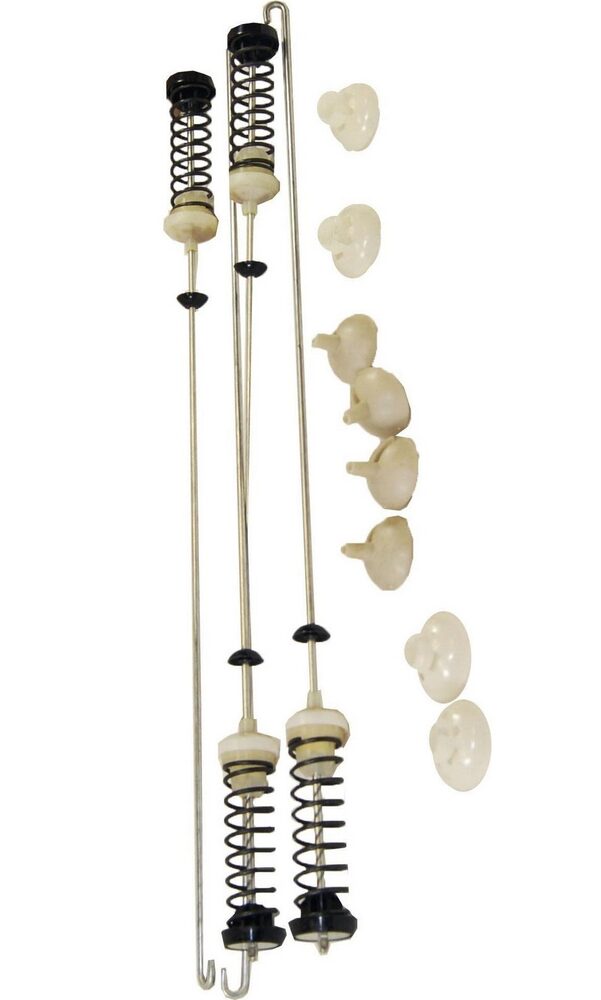
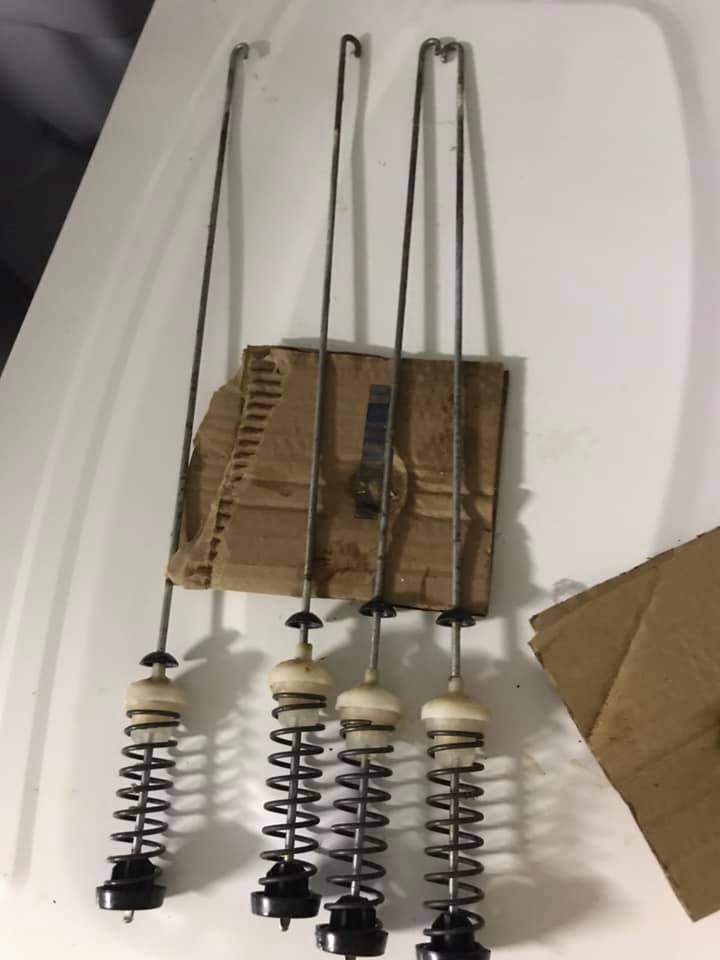
Let’s kick off with the suspension kit:
As Alex, a seasoned technician, puts it, “The suspension kit comprises of suspension rods and springs, essentially serving as the washer’s shock absorber.”
Here’s an interesting tidbit:
In our Facebook group, the Simply Swider Appliance Repair Community, a user shared their whirlwind experience with a Whirlpool WTW4930XW3 washing machine.
The washer would shake violently, even making a break for it across the floor unless the load was exceptionally light. After replacing the suspension springs, all seemed well – for one cycle. Then, the dance recital resumed. The user was left wondering if they could adjust the springs.
Alex’s advice?
“After changing the suspension, calibrate the unit. Whirlpool states that poor wash performance can result if the unit isn’t recalibrated after changing the suspension, control, basket, or some other components.”
In response to this advice, the user performed the calibration as suggested and reported back. It made a “HUGE difference,” they said.
So, here’s what you need to do:
- Step 1: Cut the power. As Alex says, “Safety always comes first!”
- Step 2: Open the washer’s front panel, and find the suspension rods and springs.
- Step 3: Inspect them. “Look for any damage, stretching, or loose attachments,” Alex advises.
- Step 4: If you find a problem, replace the suspension kit or tighten any loose connections.
To calibrate your machine after making these changes, follow these steps:
- Step 1: Enter diagnostics mode by turning the knob left, right, right, right, left, right. This can be a bit tricky, so take your time.
- Step2: Turn the knob until only the rinse LED is lit.
- Step 3: Press start and let the machine do its thing.
Also, consider checking for error codes while in diagnostics mode. Use the same method as above but with the ‘done’ LED illuminated. The machine will display codes in a binary fashion using the lights.
Still, don’t bite off more than you can chew.
“If this isn’t your area of expertise,” Alex recommends, “get in touch with a professional. They’ll handle the replacement and save you from potential headaches down the line.”
4. Remove the Shipping Bolts
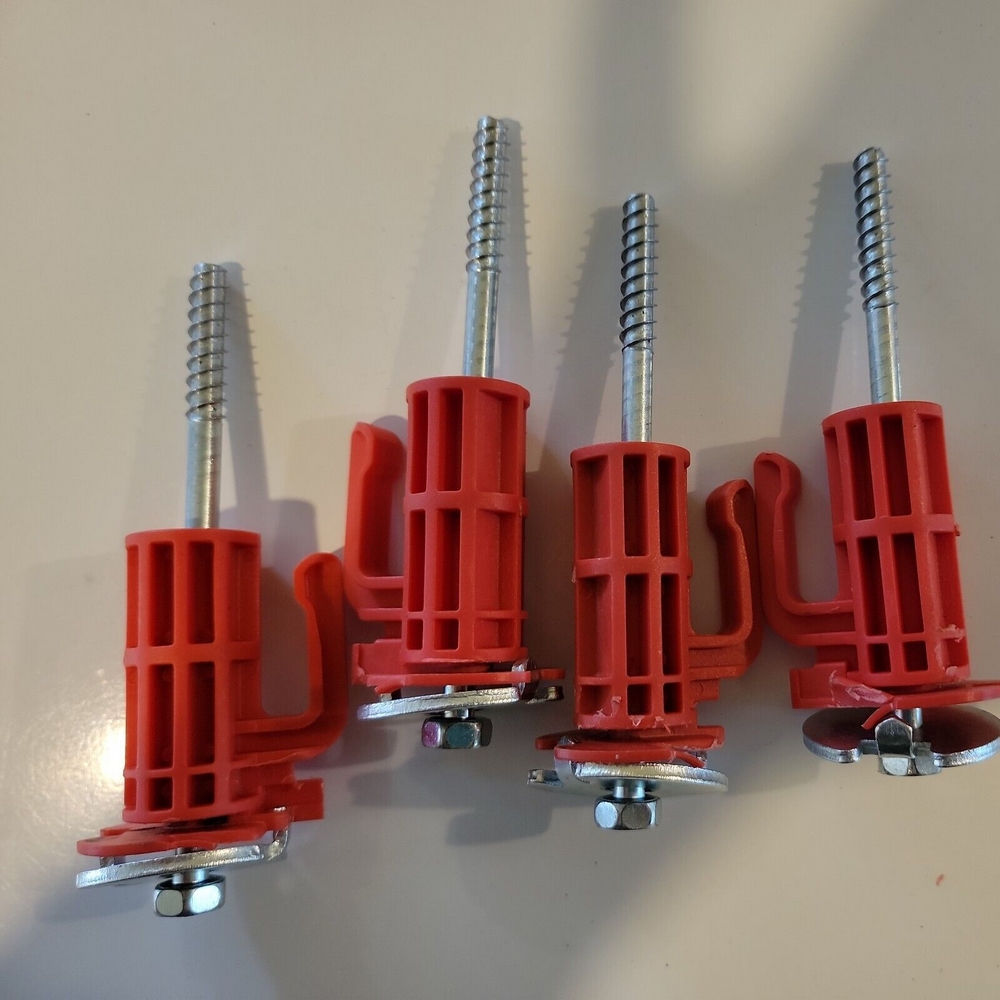
Bear with me here:
It’s easy to overlook the simple things, especially when it comes to new appliances.
But:
In our Simply Swider Appliance Repair Community, we recently had a case that illustrates this point perfectly.
One user shared his predicament, “I just bought a brand new Whirlpool washer…it vibrated so badly it would walk almost a foot across the floor…Got a new machine, and I have the same issue. I even built a leveled platform…Yet this violent shaking during the spin cycle remains.”
A perplexing problem, right?
But sometimes, the solution is right under our noses.
Alex was quick to offer his advice. “Those shipping bolts, or transit bolts, are often overlooked. They’re there to secure the washer drum during transit, but once installed, they need to come off.”
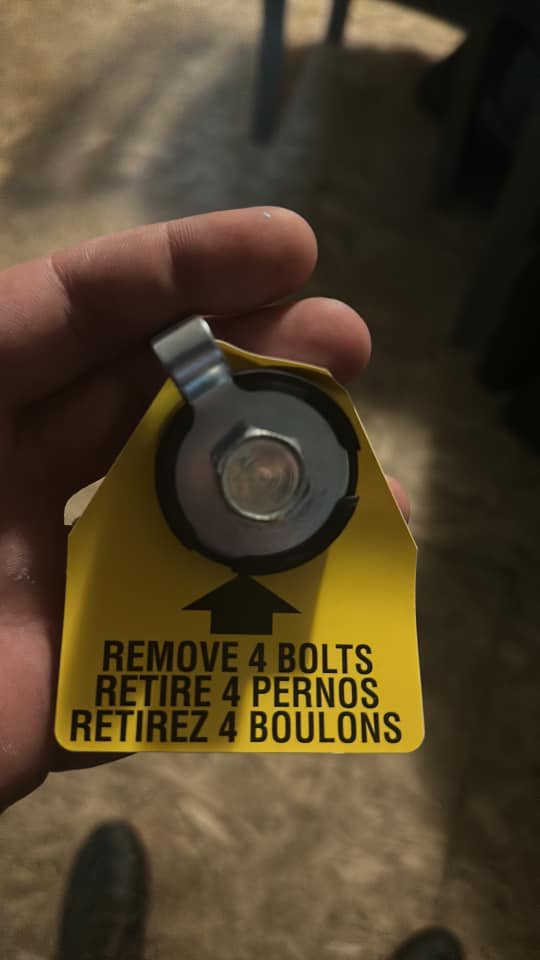
Heeding Alex’s advice, our puzzled user checked the back of his washer, “So apparently, reading is hard for me,” he confessed later in the group, realizing his error 😀
So:
If you find yourself in a similar situation, don’t panic. Inspect the back of your washer.
If you spot any prominent bolts, remove them with a wrench and run a test cycle. This small step can bring back the peace to your laundry routine.
Remember to store the bolts safely though. As Alex wisely advises, “They’ll come in handy if you ever need to transport your washer.”
5. Replace the Worn-out Snubber Ring
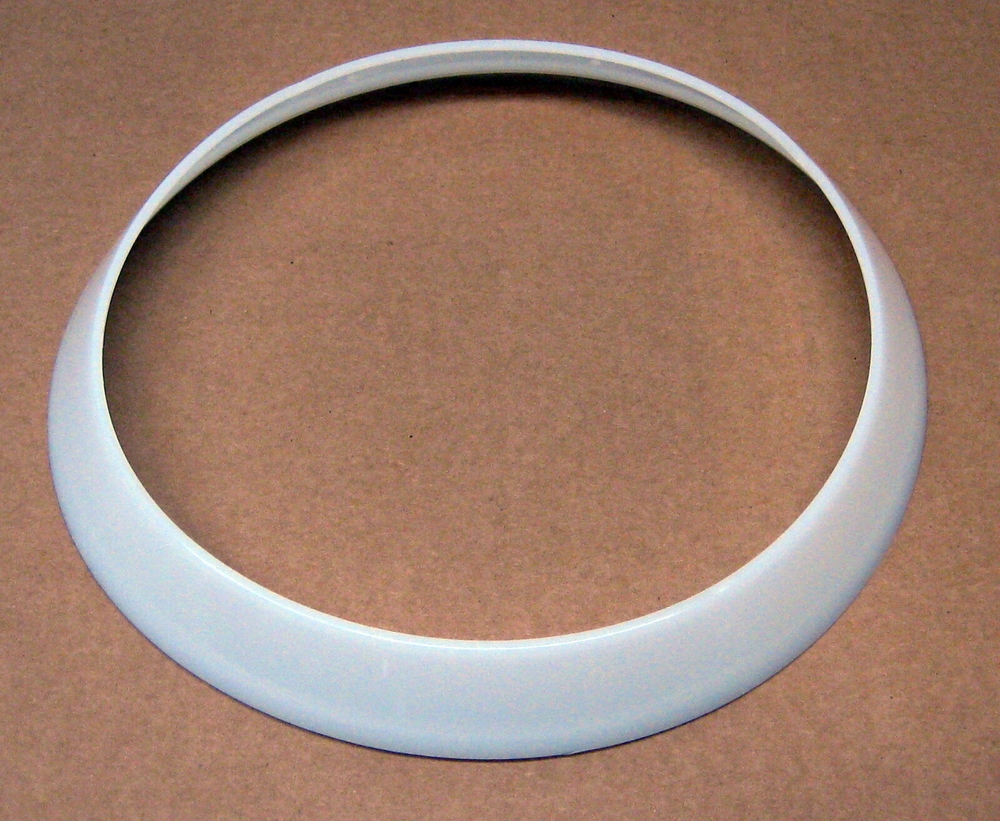
Here’s a nugget of wisdom from Alex,
“A worn-out snubber ring can transform your peaceful laundry routine into a rock concert. It’s a common cause for a violently shaking Whirlpool washer.”
So, what’s this snubber ring?
In the simplest of terms, it’s a buffer. It sits between the washer base and the tub, cushioning the vibrations during the spin cycle.
Over time, however, this ring can wear out. When that happens, the washer base and tub connect more directly, resulting in your washer turning into a headbanging rockstar.
Noticing your washer making loud banging noises? Alex advises, “Check the snubber ring. It’s probably faulty and needs a replacement.”
Here’s how you do it:
- Step 1: Unplug your washer. Safety first, right?
- Step 2: Take off the washer’s access panel and find the snubber ring.
- Step 3: Look closely. Any cracks, wear, or holes? That’s a sign of damage.
- Step 4: If it’s damaged, replace the snubber ring.
- Step 5: Put back the front panel and plug your washer back in.
“Remember,” Alex cautions, “disconnecting the snubber ring can be tricky. There’s a lot of electrical tension involved. If you’re not comfortable doing it yourself, get a professional to help.”
Models Most Affected
We all know:
Whirlpool washers typically emit a low hum during a cycle as spin speeds build up. However, when there is an anomaly, your washer might make more noise than expected.
Now:
These specific Whirlpool washer models or model series have a reputation for shaking violently during the spin cycle.
1. Whirlpool Duet
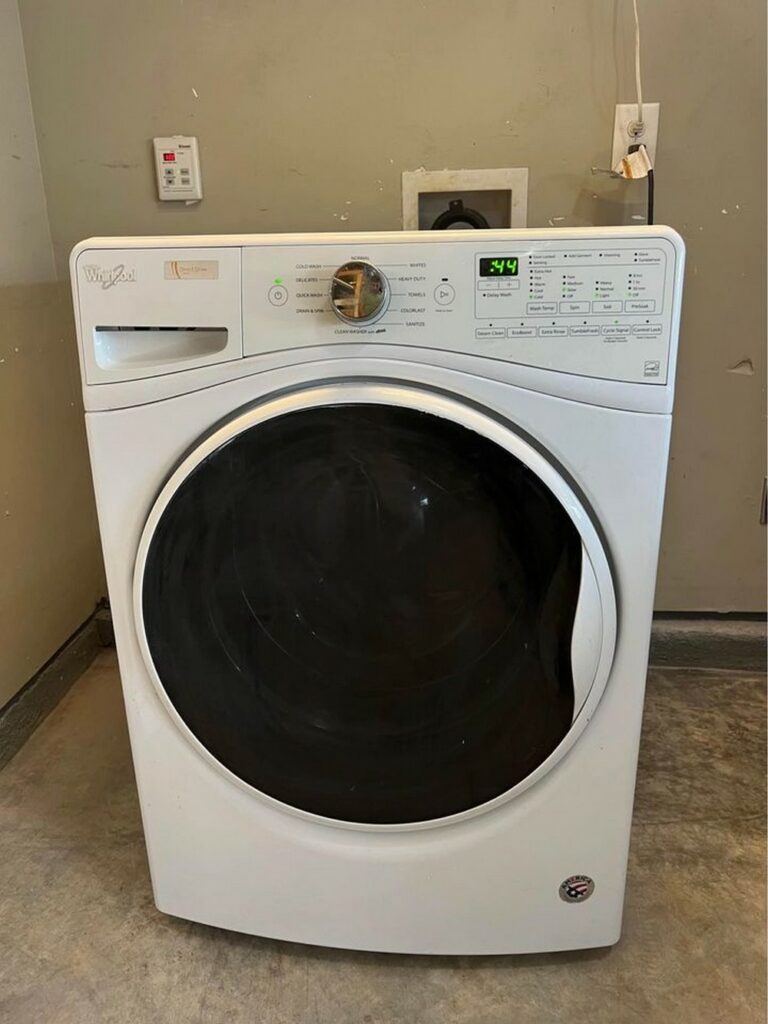
Look:
The Whirlpool Duet is a large-capacity front-load washer that offers convenience and efficiency to users.
The thing is:
This model might be powerful, but it is not above malfunctions. Frustrated users have complained that it shakes aggressively, especially during the spin cycle.
2. Whirlpool Stackable Front Load Washer
Fact:
With the Whirlpool stackable front load washer, you can save space and energy without compromising the effectiveness of a wash.
The stackable washer provides intuitive controls and a large stainless steel wash tub for a more convenient laundry experience.
You see:
The stacked washer and dryer could vibrate violently and loudly if the stacking kit isn’t properly installed.
You’ll need to tighten loose screws and replace worn brackets to curb the jittering.
3. Whirlpool Top Load Washer
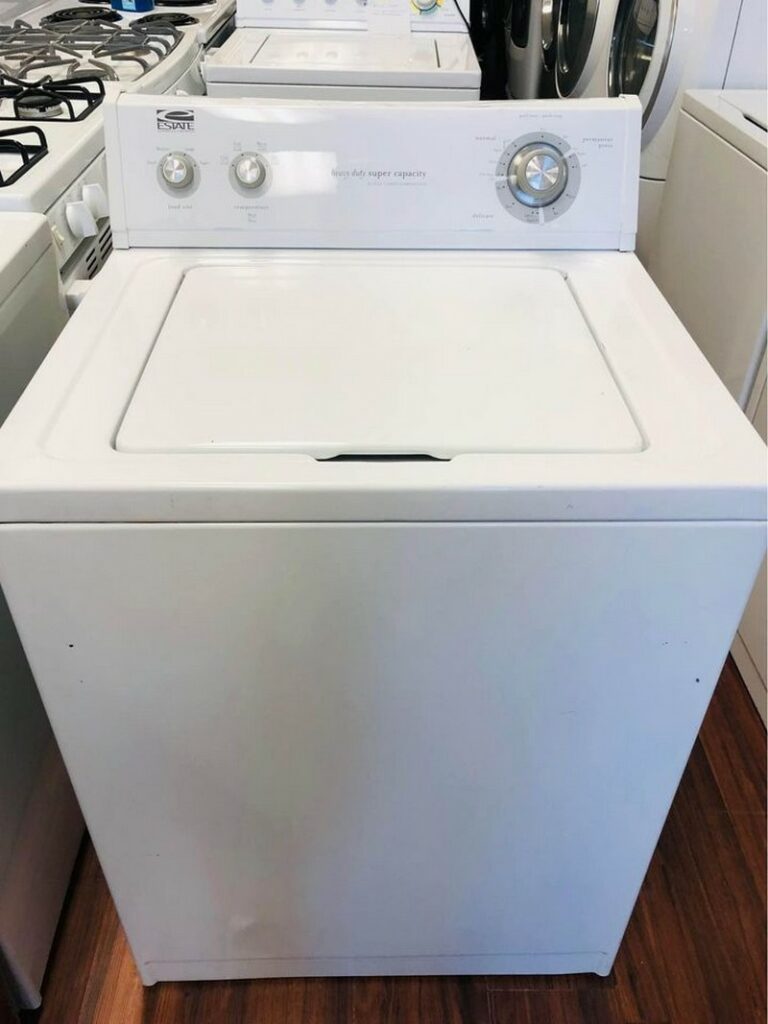
Listen:
Whirlpool top load washers usually feature large capacity wash tubs that enable you to pre-soak, wash and spin at a go.
They are designed with Adaptive Wash technology which detects the type of wash load and optimizes the cycle settings for efficient cleaning.
However:
This model series has a high rate of consumer complaints regarding its shaky washers. Luckily, you can troubleshoot any issues easily with the suggestions in this guide.
Conclusion
No doubt:
A noisy, shaky Whirlpool washer is exceedingly hard to tolerate, especially when you value peaceful and quiet spaces.
Hearing a ruckus each time you run the spin cycle could put you off getting your laundry done entirely.
But:
You still need clean clothes, and ignoring your loud vibrating washer could eventually lead to more severe complications.
As such:
You could try these helpful guidelines to stop your Whirlpool from shaking violently during a spin cycle.
- Ensure your Whirlpool washer is balanced.
- Replace the faulty shock absorber.
- Change the damaged suspension kit.
- Remove the shipping bolts.
- Replace the worn-out snubber ring.
You see:
These fixes are cost-friendly and shouldn’t take too long to effect.
Troubleshooting your Whirlpool washer should usually be your first option when it develops any faults.
So:
If your Whirlpool washer is shaking vehemently during the spin cycle, you should repair it yourself or get help from a skilled technician.
You should also contact Whirlpool Customer Support for assistance where needed.
Got it?
Remember to share any additions, reservations, or questions you may have in the comment section below!
Frequently Asked Questions
Your washing machine could shake violently during the spin cycle for various reasons. These include an unbalanced washer and wash load, faulty shock absorber, defective suspension kit, or worn-out snubber ring.
To stop your Whirlpool washer from shaking, redistribute the clothing inside the washer or remove clothes to balance it. You could also replace damaged parts like the shock absorber, suspension kit, or snubber ring.
If your washing machine is shaking during the spin cycle, ensure it is not overloaded and the clothes are distributed evenly for balance.
Also, check for faults in essential machine components like the shock absorber, snubber ring, or suspension kit.
Your washing machine is probably violently vibrating while doing laundry because of an uneven wash load, among other reasons.
To fix this, you should redistribute the wash load and ensure your washer is on level ground.
Washing machine shock absorbers reduce the impact of the washtub movement during the spin cycle. They typically have a life expectancy of about ten years if the washer is properly handled and maintained.
Foreign objects or laundry lodged in your Whirlpool washer could cause your washer to run off balance.
In addition, unevenly distributed or overloaded laundry in the washer could cause it to be unbalanced.
You can detect that your washer’s balance/snubber ring is faulty if your washer shakes vehemently, especially during the spin cycle.
Confirm that it is defective by detaching the tub cover and inspecting the ring for damage.
Generally, washer suspension rods can last approximately ten years, similar to the expected life span of a Whirlpool washer.
The rods are manufactured to work with suspension springs in a kit that aids their functionality.

